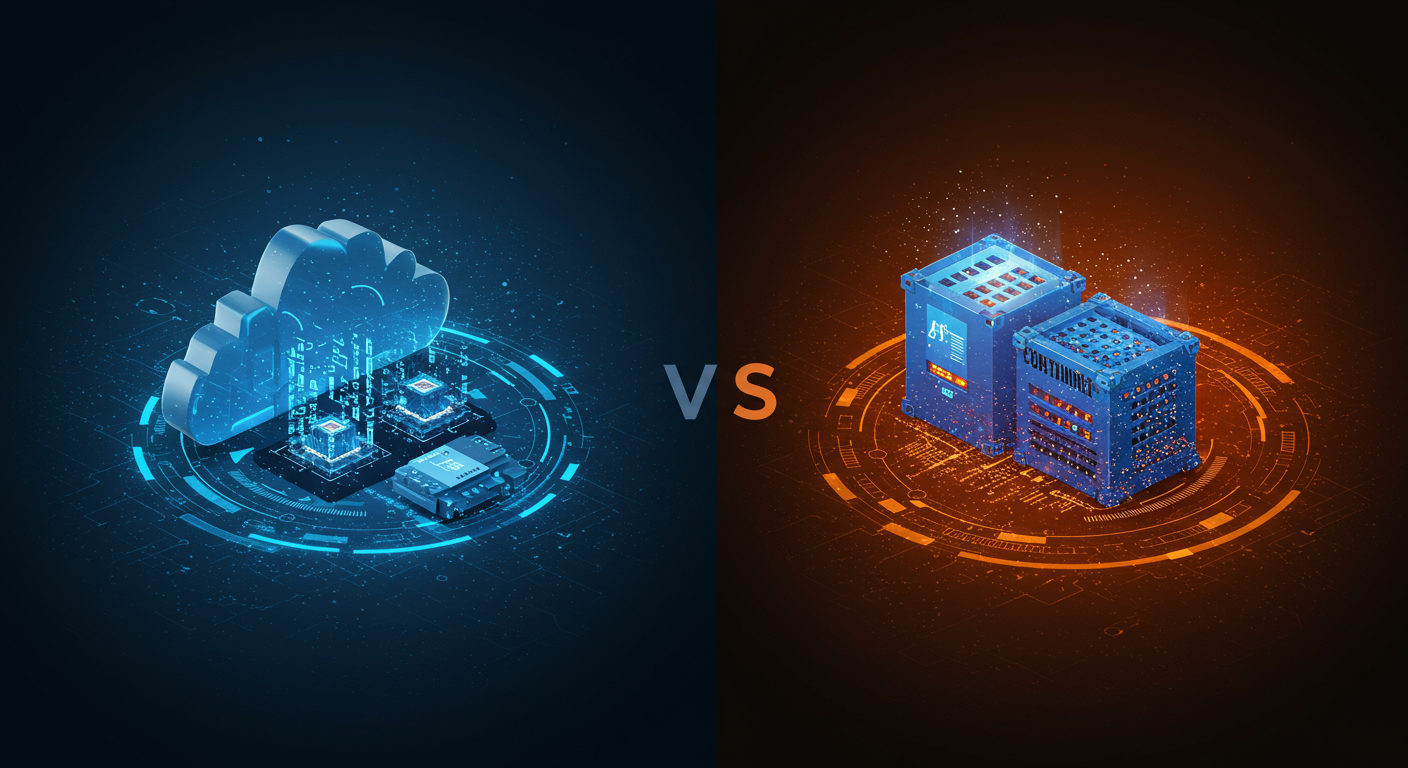Serverless vs. Containers: A Deep Dive
Both serverless computing and containers have emerged as powerful technologies for deploying and managing applications in the cloud. While they share some similarities, such as enabling microservice architectures and improving scalability, they have distinct characteristics, benefits, and trade-offs. This article explores these differences to help you choose the right approach for your needs.

What is Serverless?
Serverless computing, often associated with Function-as-a-Service (FaaS), allows you to run code in response to events without managing the underlying infrastructure. Providers like AWS Lambda, Azure Functions, and Google Cloud Functions handle server provisioning, scaling, and maintenance. You focus on writing functions and pay only for the compute time consumed. For a deeper understanding, visit our What is Serverless? page.
What are Containers?
Containers, popularized by Docker, package an application'''s code with all its dependencies (libraries, system tools, runtime) into a standardized unit. This ensures consistency across different environments. Container orchestration platforms like Kubernetes automate the deployment, scaling, and management of containerized applications. Unlike serverless, you often still manage the container orchestration layer and underlying compute instances, though managed services are available.
Key Differences
| Feature | Serverless (FaaS) | Containers |
|---|---|---|
| Abstraction Level | Functions (code snippets) | Applications and their dependencies |
| Scalability | Automatic, event-driven, fine-grained | Automatic (with orchestrator), but often requires configuration of scaling policies |
| Startup Time | Can have cold starts (latency for first invocation) | Faster startup than VMs, but generally slower than warm serverless functions |
| State Management | Primarily stateless; requires external services for state | Can manage state, but often designed for statelessness with external persistence |
| Cost Model | Pay-per-execution/duration; potentially very cost-effective for sporadic workloads | Pay for provisioned resources (CPU, memory), even if idle (unless using serverless container platforms) |
| Management Overhead | Minimal; provider manages OS, runtime, and scaling | Higher; involves managing container images, orchestration, and often underlying infrastructure |
| Resource Allocation | Memory and CPU allocated per function | More control over resource allocation (CPU, memory, storage, network) per container |
| Local Development & Testing | Can be more complex due to cloud dependencies | Easier local testing due to consistent environments |
When to Choose Serverless?
- Event-driven applications: Ideal for processing file uploads, database changes, or messages from a queue.
- APIs and backends: Building RESTful APIs or microservices that handle specific tasks.
- Scheduled tasks & cron jobs: Running periodic tasks without needing a dedicated server.
- Fluctuating or unpredictable workloads: Scales automatically to handle traffic spikes and scales to zero when idle, optimizing costs.
- Rapid development and prototyping: Faster time-to-market due to reduced infrastructure concerns.
When to Choose Containers?
- Long-running processes: For applications that need to run continuously, like web servers or background workers not suited for short-lived functions.
- Consistent workloads: When you have a predictable amount of traffic and resource needs.
- Migrating existing applications (Lift and Shift): Easier to containerize and move existing applications to the cloud.
- Complex applications with many dependencies: When you need fine-grained control over the environment and dependencies.
- Full control over the environment: If you need specific OS configurations, custom runtimes, or network setups.
- CPU/GPU intensive workloads: When you require significant, sustained computational power.
Can Serverless and Containers Work Together?
Yes, serverless and containers are not mutually exclusive and can be complementary. Many modern cloud architectures leverage both:
- Serverless functions invoking containerized services: A serverless function might act as an event handler that triggers a more complex, long-running process hosted in a container.
- Containers running serverless workloads: Platforms like AWS Fargate for ECS/EKS, Azure Container Instances, and Google Cloud Run allow you to run containers with serverless-like operational models (pay-per-use, no instance management). AWS Lambda also supports packaging functions as container images.
- Microservices architecture: Some microservices in an application might be best suited for serverless functions, while others might be better as containerized services.
For example, you might use serverless functions for an API gateway and user authentication, which then route requests to backend services running in containers that handle complex business logic or data processing.
Conclusion
The choice between serverless and containers depends heavily on your specific application requirements, team expertise, operational preferences, and cost considerations. Serverless excels in event-driven scenarios and offers ultimate scalability and cost-efficiency for variable workloads. Containers provide greater control, portability, and are well-suited for migrating existing applications or running complex, long-running processes.
Understanding the strengths and weaknesses of each will empower you to build more efficient, scalable, and cost-effective cloud-native applications. Often, a hybrid approach, leveraging the best of both worlds, provides the most optimal solution.
For more insights into specific serverless platforms, check out our section on Major Providers.